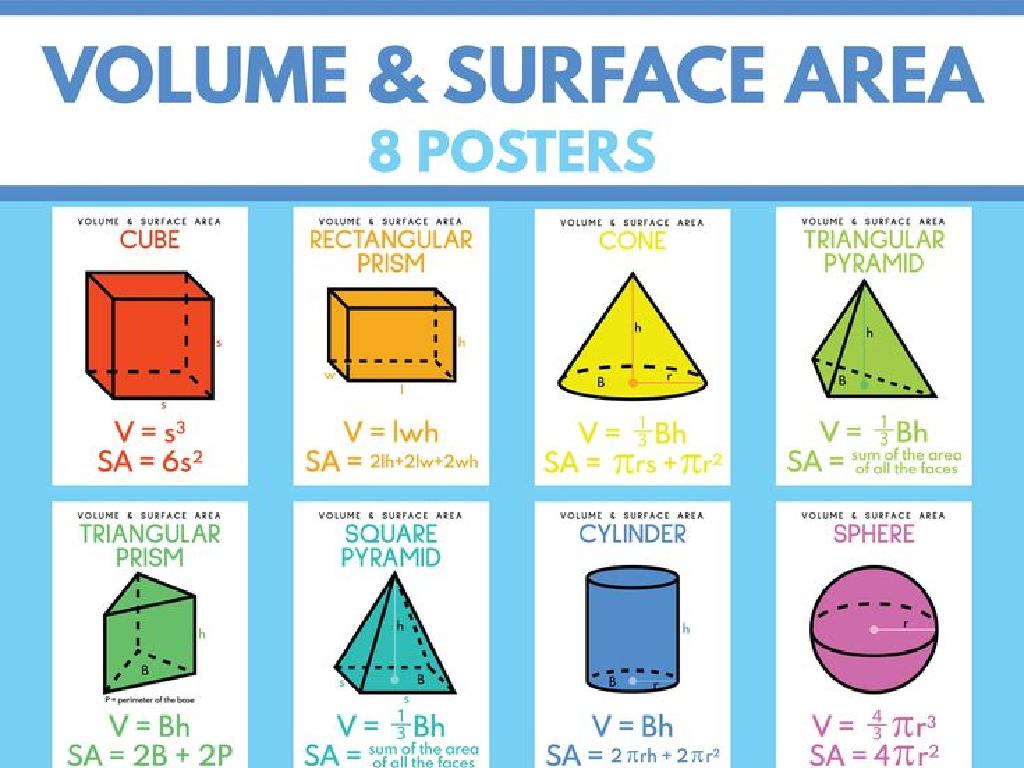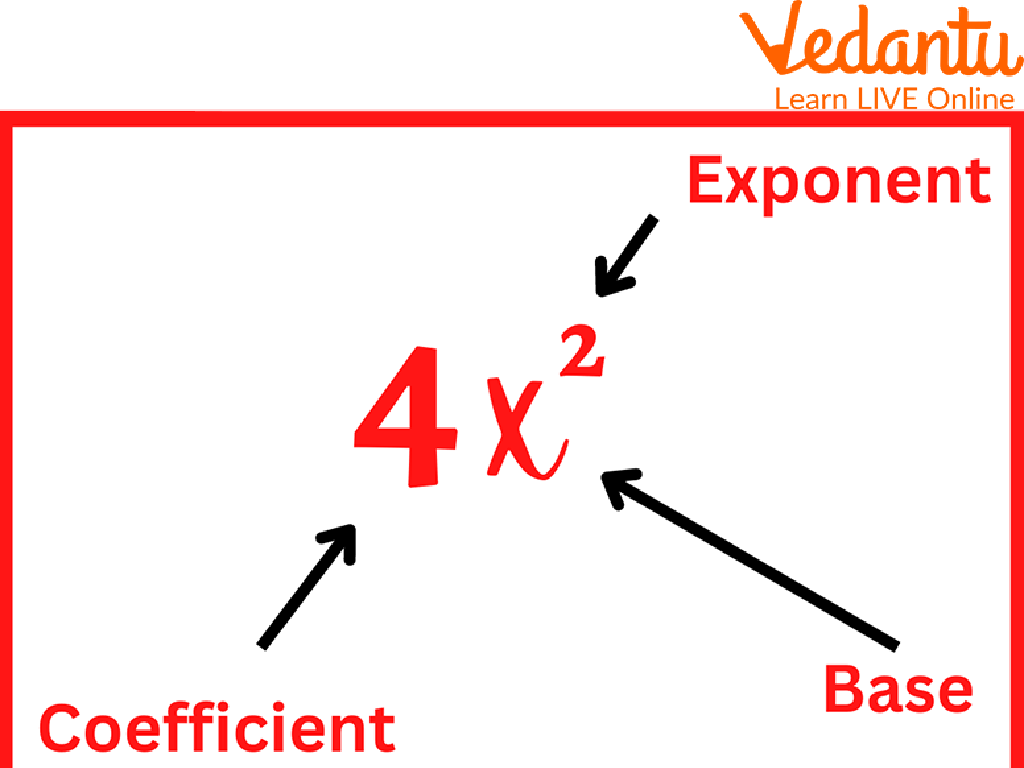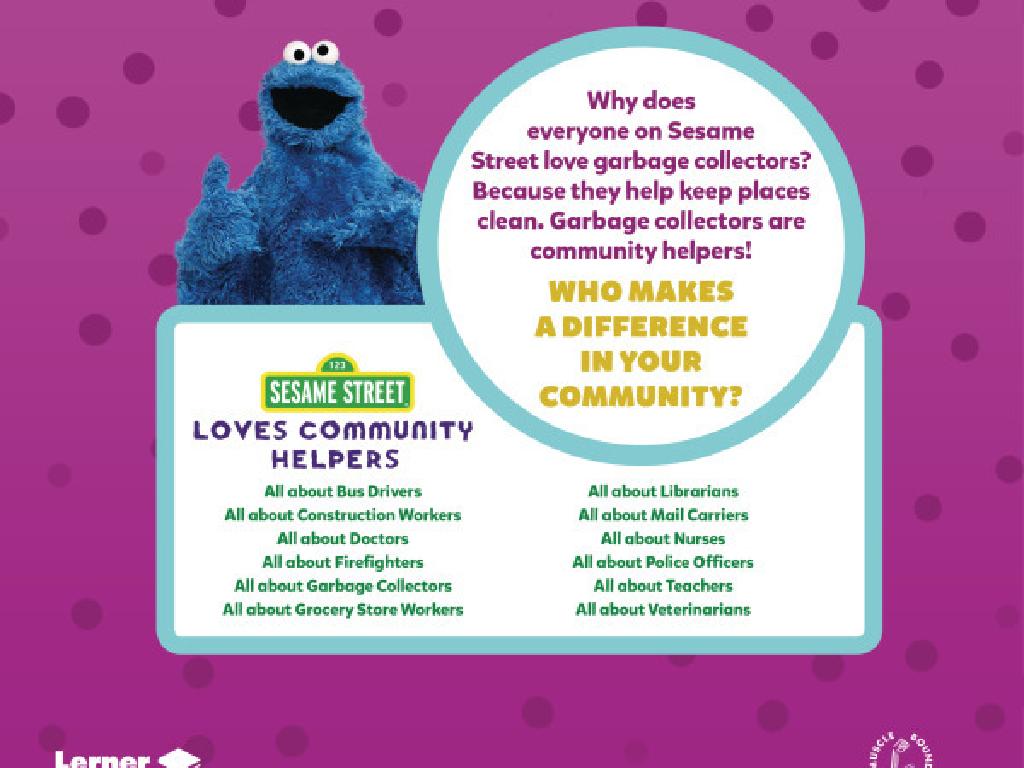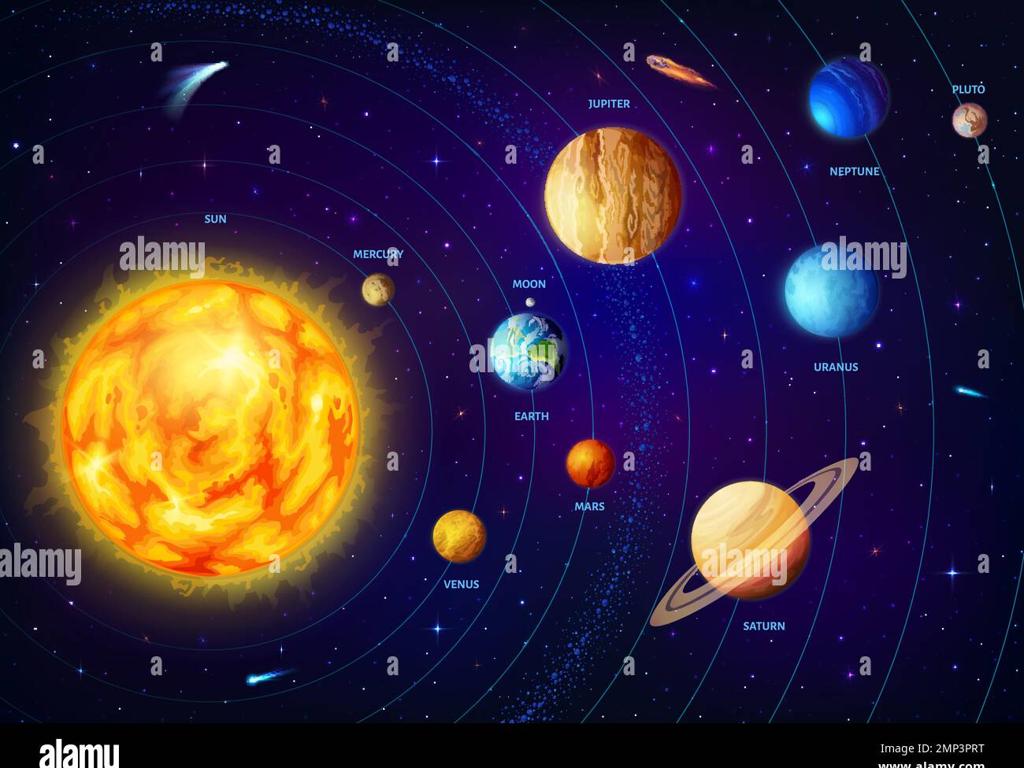Make Teen Numbers: Addition Sentences
Subject: Math
Grade: Kindergarten
Topic: Count Tens And Ones - Up To 20
Please LOG IN to download the presentation. Access is available to registered users only.
View More Content
Welcome to Teen Numbers!
– Teen numbers are special
– Numbers 10 through 19
– These are the numbers after 9 and before 20
– Making teens with addition
– Add single digits to 10 to make teen numbers
– Practice with examples
– Example: 10 + 4 = 14, which is a teen number
|
This slide introduces kindergarteners to the concept of teen numbers, which are the numbers from 10 to 19. It’s important to emphasize that these numbers are made up of ten and some more. Use visual aids like number lines or counters to help students understand that when we add any number from 1 to 9 to 10, we get a teen number. Encourage students to use their fingers or manipulatives to add to 10 and find teen numbers. Provide several examples and allow the students to practice making their own addition sentences with guidance. This will help them grasp the concept of teen numbers as a foundation for their understanding of the base-ten number system.
Exploring Teen Numbers
– Teen numbers: 10 to 19
– After 9, we have 10, 11, 12, …, up to 19
– Composed of tens and ones
– Example: 14 is 1 ten and 4 ones
– Counting 10 to 19
– Let’s count: 10, 11, 12, …, 19 together!
|
This slide introduces kindergarteners to the concept of teen numbers, which are the numbers from 10 to 19. Explain that these numbers are special because they are the first time we see numbers made up of tens and additional ones. Use visual aids like counting blocks or fingers to help students visualize the ‘ten’ and the ‘ones’ that make up each teen number. Practice counting from 10 to 19 with the class to reinforce the sequence of teen numbers. Encourage students to use their fingers to count the ‘ones’ as they say each number.
Building Teen Numbers with Addition
– Every teen number starts with ten
– Add ones to make teens
– Example: 10 + 4 equals 14
– Starting with 10, we add 4 more to make 14
– Practice making teen numbers
– Try with different ones to make 11, 12, 13…
|
This slide introduces the concept of building teen numbers using addition for Kindergarten students. Emphasize that all teen numbers begin with the number ten and then we add ones to that base of ten to create different teen numbers. Use visual aids like blocks or fingers to show ten and then add one block or finger at a time to reach the teen numbers. Encourage students to practice with different numbers of ones to create all the teen numbers from 11 to 19. This hands-on activity will help solidify their understanding of the composition of teen numbers.
Making Teen Numbers with Addition
– Addition makes new numbers
– Use ‘+’ to add numbers
– Example: 10 + 5 equals 15
– Adding ten and five gives us fifteen
– Let’s make teen numbers together!
– Practice with different numbers to make teens
|
This slide introduces the concept of addition as a method for creating new numbers, specifically focusing on making teen numbers. Start by explaining that addition is like putting things together to make a bigger group. Show the plus sign (+) and explain that it’s used to tell us to add. Use the example provided (10 + 5 = 15) to demonstrate how to combine numbers to reach a teen number. Encourage the children to think of addition as a fun way to make new numbers. After explaining, engage the students with hands-on activities where they can practice adding different numbers to make teen numbers, such as using blocks or counters to visually represent the addition.
Let’s Practice Together: Making Teen Numbers
– I’ll show you a number on the board
– We’ll use blocks to make the number
– We’ll use ten-blocks and one-blocks
– Counting tens and ones together
– Ten-blocks for the big number, one-blocks for the rest
– Example: Making the number 16
– 1 ten-block and 6 one-blocks make 16
|
This slide is designed for a hands-on class activity to help Kindergarten students understand the concept of teen numbers using addition sentences. Start by showing a number, such as 16, on the board. Then, using physical blocks, demonstrate how to count out ten blocks to represent the ‘ten’ in the teen number, and then add one blocks to reach the total number. For example, to make 16, show one group of ten blocks and then add six individual one blocks. Encourage the students to participate by picking the correct number of blocks and making the number themselves. This visual and tactile method will help solidify their understanding of teen numbers as composed of tens and ones.
Making Number 13 with Blocks
– Begin with a ten block
– Add three single blocks
– Count all the blocks together
– Start from 10, then say 11, 12, 13 as you add each block
– Understand 13 as 10 and 3 more
– Seeing 13 as a group of ten and three extra helps grasp teen numbers
|
This slide is aimed at helping Kindergarten students understand the concept of teen numbers, specifically the number 13. Start by showing them a ten block to represent the number 10. Then, introduce three single blocks, adding them one by one to the ten block. As each single block is added, count aloud with the students from 10 to 13. This visual and interactive method helps students see that 13 is made up of 10 plus 3 more. Reinforce the concept by having students practice with physical blocks or illustrations in class. Encourage them to touch and count each block as they add to solidify their understanding of combining tens and ones to make teen numbers.
Your Turn: Making Teen Numbers!
– Start with a ten block
– Add ones to make a teen number
– Let’s try making 17 together
– For example, add 7 ones to your ten block
– Show your number to the class
– Share how you made 17 with your ten block and ones
|
This slide is an interactive activity for the students to practice making teen numbers using ten blocks and ones. Encourage the children to start with a ten block, which represents the number 10, and then add individual ones until they reach the teen number you’ve asked for, in this case, 17. This hands-on activity helps them understand the concept of teen numbers as being composed of ten and some more. After they’ve made the number, have them present their method to the class, reinforcing their understanding and building their confidence in counting. Provide assistance as needed and praise their efforts to foster a positive learning environment.
Teen Number Bingo: Addition Fun!
– Let’s play Bingo with numbers!
– Listen to addition sentences
– Example: If I say ‘5 + 7′, look for ’12’
– Find the sum on your Bingo card
– Shout ‘Bingo!’ for five in a row
|
This interactive Bingo game is designed to help Kindergarten students practice adding numbers to make teen numbers. Prepare Bingo cards with teen numbers (11-19) in advance. Read out simple addition sentences that result in teen numbers. Students will search for the answer on their cards and mark it. The first student to get five correct answers in a row (horizontally, vertically, or diagonally) and shouts ‘Bingo!’ wins. Possible variations of the activity: 1) Use different addition sentences for each round. 2) Offer small prizes for winners. 3) Play in small groups or pairs to encourage teamwork. 4) Have students create their own addition sentences for peers. This activity reinforces number recognition, addition skills, and listening comprehension.






